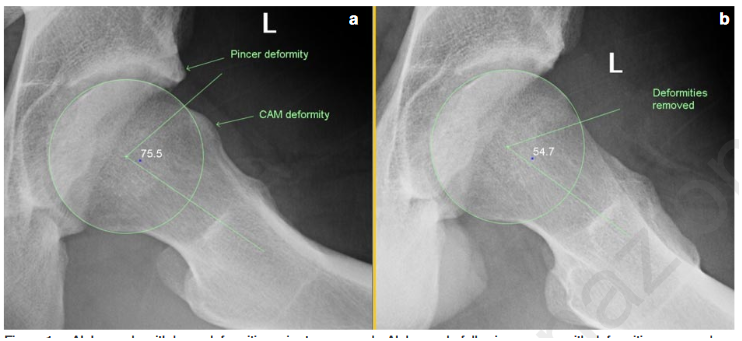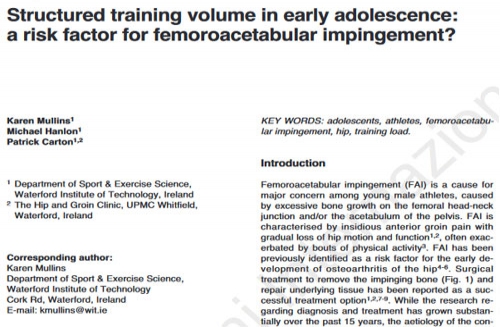Structured training volume in early adolescence: a risk factor for femoroacetabular impingement?

Karen Mullins1 Michael Hanlon1 Patrick Carton1,2 Muscles, Ligaments and Tendons Journal
Introduction
To determine whether athletes un- dergoing surgical intervention for FAI completed more hours of structured training in adolescence than matched healthy athletes.
Methods
Sixty-seven athletes (25.53 ± 4.8 years) undergoing surgical intervention for symptomatic FAI were asked to recall the number of hours en- gaged in structured training between the ages of 10-12 and 13-15 years old (FAI group). Results were compared to an age (24.56 ± 4.5 years), gen- der and activity level matched control group (n=71) with no history of chronic hip/groin pain or hip stiffness and who were currently engaged in similar levels of training and competition.
Results
The FAI group reported significantly more structured training hours between the ages of 10-12 years than controls (6.55 ± 3.1 versus 5.69 ± 3.7 hrs/week, p=0.02) but no differences were observed for training volume between the ages of 13-15 years (8.45 ± 3.4 vs 8.03 ± 3.7 hrs/week, p=.397).
Conclusion
Higher volumes of structured train- ing in early adolescence are a potential risk factor for the development of symptomatic FAI later in the player pathway. Level of evidence: IV.
KEY WORDS:
adolescents, athletes, femoroacetabular impingement, hip, training load
Structured training volume in early adolescence: a risk factor for femoroacetabular impingement?







